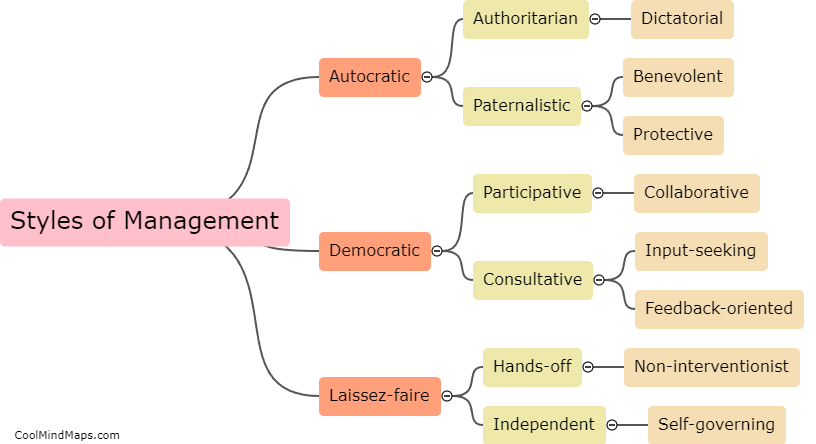What are the different styles of management?
There are various styles of management, each with its own unique approach and characteristics. The autocratic style is characterized by a top-down approach, where the manager makes decisions without involving employees in the process. This style is most effective in situations where quick decision-making is required. On the other hand, the democratic style involves employee participation and decision-making through open communication and collaboration. This style promotes teamwork and employee empowerment. Another style is the laissez-faire style, where the manager provides minimal guidance and allows employees to have maximum freedom and autonomy. This style works well when employees are highly skilled and independent. Additionally, there is the transformational style, where the manager inspires and motivates employees through a shared vision and charisma. This style focuses on personal growth and development. Lastly, the situational style involves adapting the management style based on the specific situation or task at hand. This flexibility allows managers to be versatile and effective in various circumstances. Overall, the choice of management style depends on factors such as the nature of the organization, the employees' skills and preferences, and the goals to be achieved.

This mind map was published on 20 December 2023 and has been viewed 80 times.











